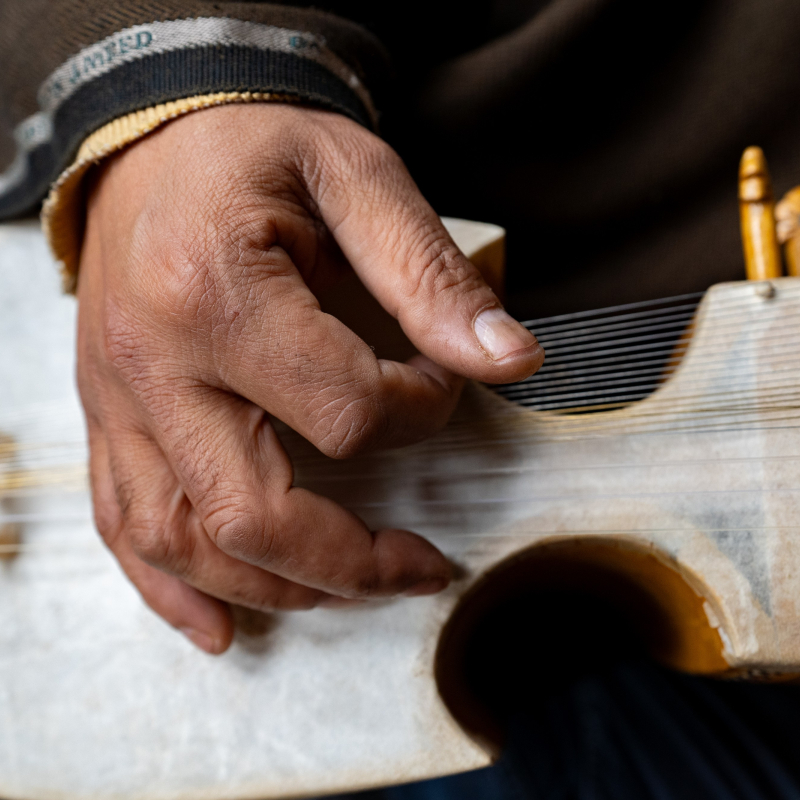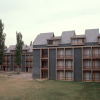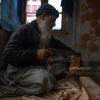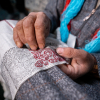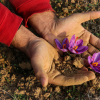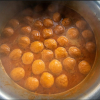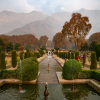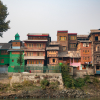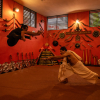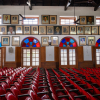Kashmir, renowned for its breath-taking landscapes, is equally distinguished by its deep-rooted artistic heritage. Its music and performing arts have flourished across centuries, shaped by religious and cultural influences. These traditions remain integral to the region’s identity, spirituality and communal life.
Historical records such as the Nilamata Purana and Rajatarangini underscore the significance of music and dance in religious rituals and royal ceremonies. The Nilamata Purana, a sixth-century Mahatmya, details festivals featuring musical concerts, ceremonial bathing in the river Vitasta (Jhelum) and communal singing in the evenings. The Harwan archaeological site in Srinagar, once a thriving Buddhist centre, features terracotta tiles depicting musicians and dancers.
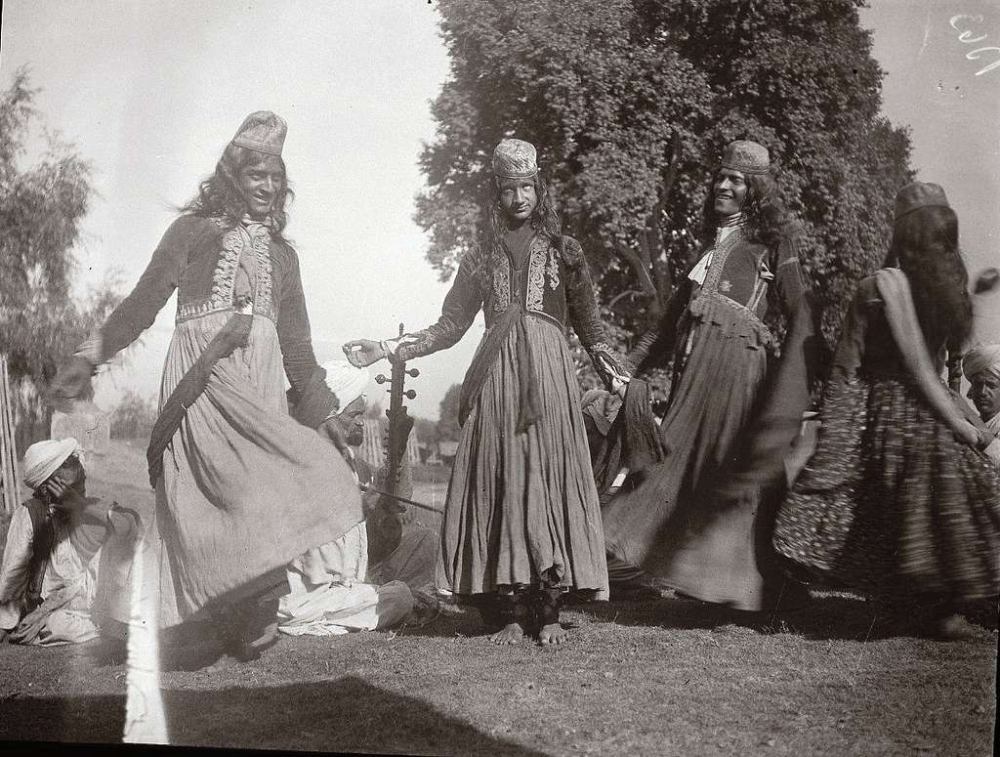
A glimpse of Kashmir, where music and dance are central to its cultural heritage, 1914. (Picture Credits: Boudewijn Huijgens Archive)
Kashmir’s musical heritage has its roots in Vedic and epic traditions, where choral singing and instrumental performances were vital. Under Raja Kalasa (r. 1063–89 CE), structured compositions emerged, including upangagita (choral songs) and refined court dances. The Rajatarangini (eleventh century) records royal patronage and diverse instruments, noting earthen pots, brass vessels and the hadukka, a large pipe-like instrument. The Domba community played a key role in these artistic traditions.
Abhinavagupta, the Kashmiri aesthetician’s significant contribution includes the Abhinavabharati (tenth century), his commentary on the Natyashastra, where he elaborated on instruments, playing techniques, notes (svara), scales (grama), rhythm (tala), tempo (laya) and song classification. Engaging with earlier scholars, he offered alternative interpretations, enriching Kashmir’s musical traditions.
Kashmiri rulers like King Harsa (r. 606–647 CE), a linguist and poet, composed songs, while King Bhiksacara (r. 1120–21 CE) played instruments and popularised the chhakri, a choral singing tradition still cherished in Kashmir.
With the Sultanate’s rise in fourteenth-century Kashmir, Persian and Central Asian influences transformed its performing arts. Sultan Zain-ul-Abidin (r. 1420–70 CE) made his court a cultural hub, inviting musicians and dancers from Persia, Khurasan and Turkistan. Mughal historian Abul Fazl’s records in the Ain-i-Akbari includes mention of masters like Khwaja Abdul Qadir Khorasani and Mulla Jamil Oodi, crediting them with enriching Kashmiri music. Sultan Haidar Shah (r. 1470–72 CE) was a skilled lute player who advanced musical instruction, while Sultan Hassan Shah (r. 1472–84 CE) expanded patronage of the arts, welcoming 1,200 performers, including famed dancers Ratnamala and Dipamala. This era shaped Kashmir’s artistic identity, forged through a harmonious fusion of indigenous and foreign traditions.
During Mughal rule in the sixteenth century, Dal Lake’s shikaras and Srinagar’s Mughal gardens hosted musical soirées, also known as Guldasta-e-Mausiqi (floral bouquet of music), where musicians performed pieces blending Persian melodies with Kashmiri folk traditions, creating a multisensory experience. Emperor Jahangir, inspired by Srinagar’s beauty, is also known to have commissioned compositions celebrating its natural charm.
Sufiana Mausiqi
Sufiana mausiqi, Kashmir’s classical music, took root in Srinagar as early as the fourteenth century. Mir Sayyid Ali Hamadani, the revered Persian saint, is believed to have introduced this tradition to the region, which was further enriched by Sheikh Noor-ud-Din Noorani’s spiritual legacy. The music resonated deeply in the alleys of Srinagar, where traditional mehfils (musical gatherings) once flourished in the grand wooden havelis and Sufi shrines, like the Khanqah-e-Moula. The santoor, perfected in the city’s workshops, became synonymous with the genre, accompanied by the sehtar, madham and wasool. The distinguished Shams Faqir and Ghulam Mohammad Qaleenbaaf gharanas nurtured generations of musicians, including the legendary Ustad Ghulam Mohammad Saznawaz, who regularly performed in the intimate courtyards of Srinagar’s historic homes and at the sacred shrines of revered saints.

Renowned santoor performer Ustad Ghulam Mohammad Saznawaz. (Picture Credit: Sahbir and Kaiser/Wikimedia Commons)
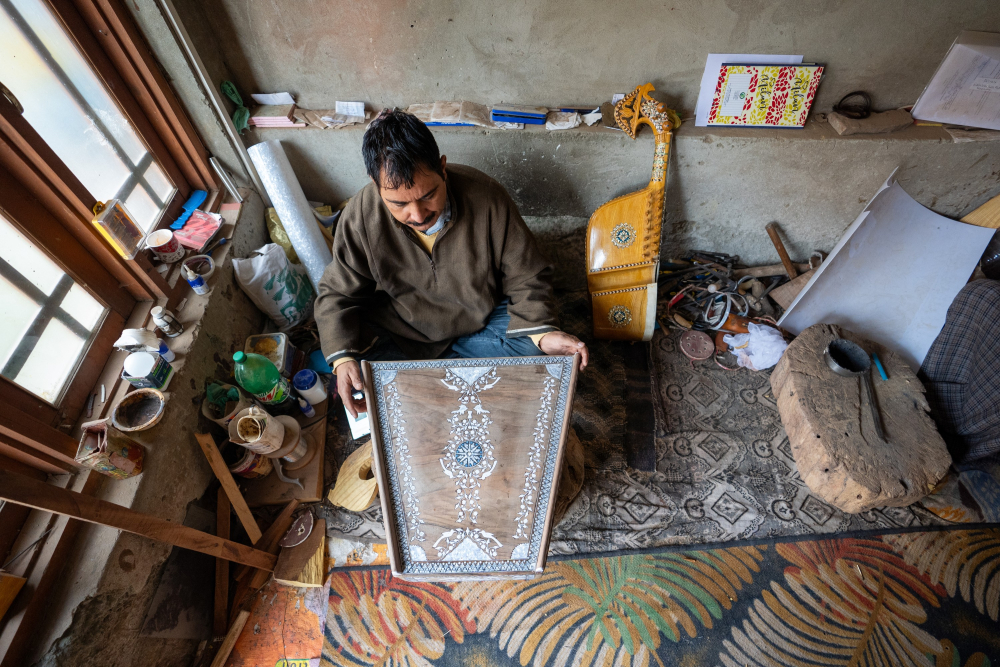
Santoor in a workshop in Srinagar. (Picture Credits: Syed Muneeb Masoodi)
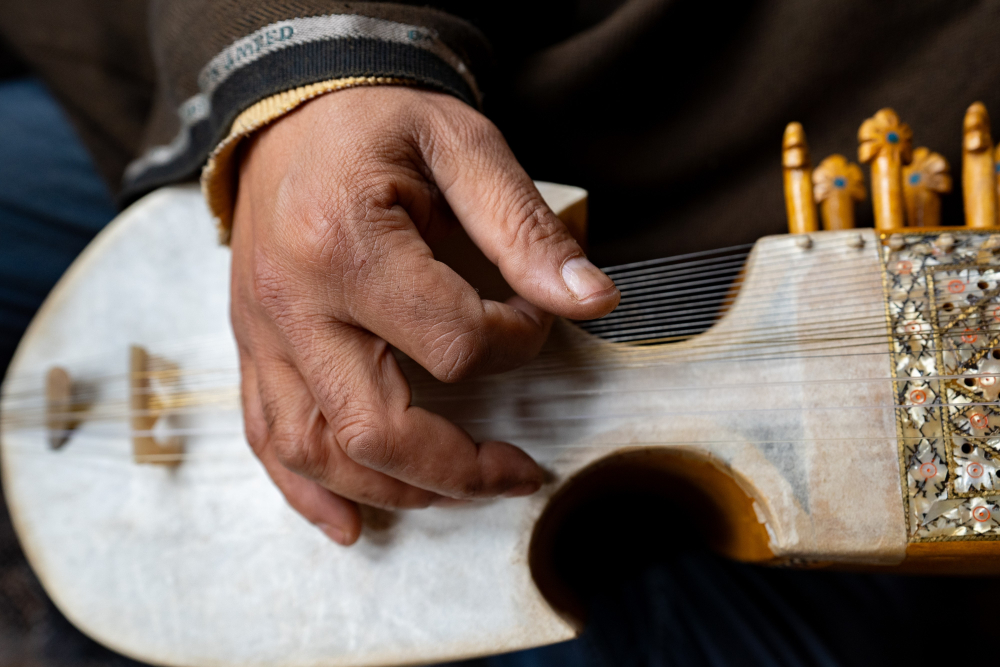
Rabab. (Picture Credits: Syed Muneeb Masoodi)
Despite challenges, sufiana mausiqi remains deeply embedded in Srinagar’s cultural fabric. Ustad Mohammad Yaqoob Sheikh, a Srinagar native, has dedicated his life to mentoring young musicians, ensuring that the melodies continue to echo through the city’s ancient bylanes. Santoor maestro Abdul Ghani Namtahali carries forward the legacy by continuing to perform at venues like the Tagore Hall and participating in Sufi festivals that still draw devoted audiences. Events such as the Shashrang Festival and performances at the Jammu and Kashmir Academy of Art, Culture and Languages have rekindled interest in these musical traditions, though it continues to struggle against modern influences and declining institutional support.
Folk Musical Traditions
Srinagar’s folk music echoes through old city quarters, festive gatherings and Sufi shrines. One of the most cherished folk traditions is wanvun, a lyrical communal singing style performed at weddings and other celebrations. In neighbourhoods like Rainawari, Habba Kadal and Safa Kadal, one commonly encounters groups of women seated in a circle, their voices rising in perfect harmony, punctuated by rhythmic clapping of hands. The songs, often passed down through generations, comprise poetic blessings for the bride and groom. The tradition has become so integral to Kashmiri cultural identity that even during periods of unrest, wanvun gatherings in Srinagar have remained spaces of collective resilience and joy.
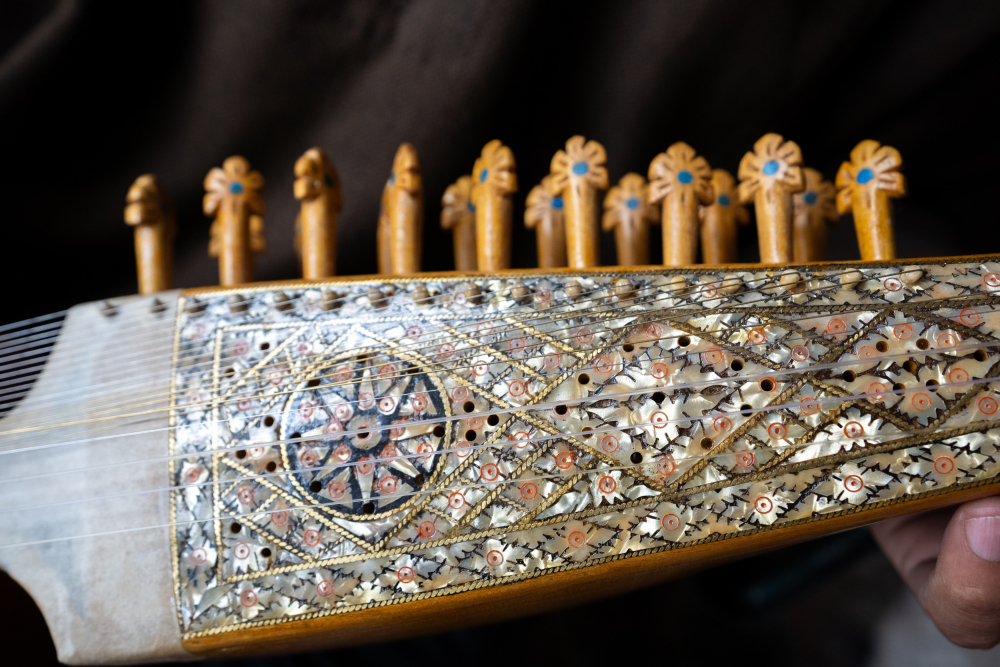
Intricately carved rabab. (Picture Credits: Syed Muneeb Masoodi)
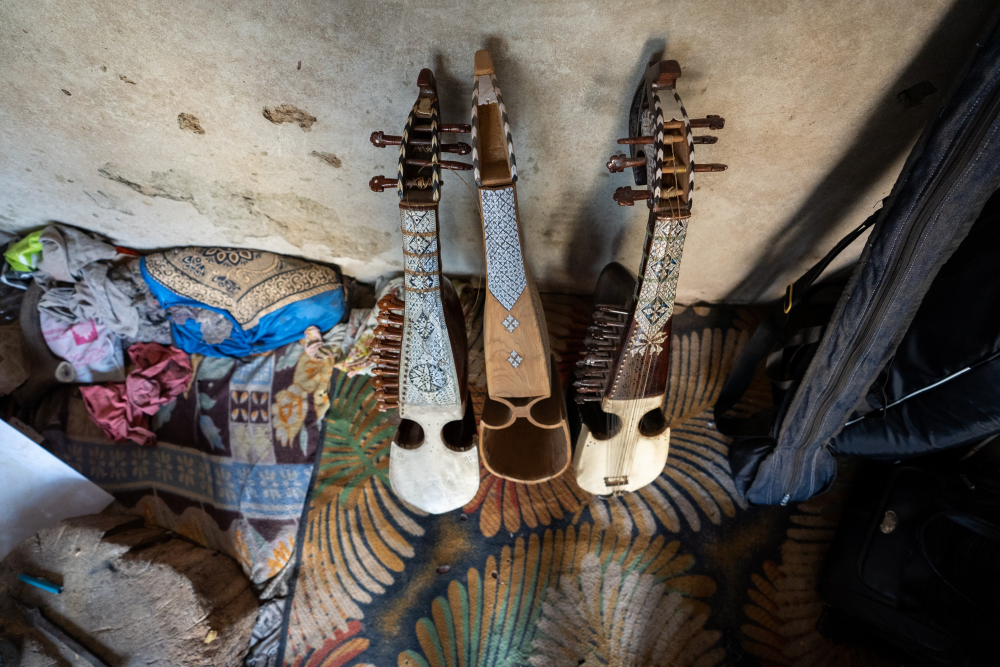
Rababs in a workshop. (Picture Credits: Syed Muneeb Masoodi)

A sarangi maker testing the soulful resonance of his handcrafted instrument. (Picture Credits: Syed Muneeb Masoodi)
Another significant folk form is rouf, a celebratory dance-song performed primarily by women, especially during spring festivals. Often performed in the open courtyards of Srinagar’s old havelis, rouf is characterised by synchronised footwork and lilting melodies.
Chhakri, another beloved genre, still thrives in the city’s Sufi shrines and cultural gatherings. Accompanied by instruments like the rabab and sarangi, chhakri typically narrates mystical poetry, drawing inspiration from revered poets such as Lal Ded and Habba Khatoon. The influence of Sufi musical traditions remains strong in Srinagar, especially at places like the dargah of Hazratbal and Khanqah-e-Moula, where devotional songs seamlessly merge with folk rhythms.
Dance Forms
Classical and theatrical dance forms further enrich Srinagar’s cultural landscape. Hafiz nagma, an elegant dance form closely associated with sufiana mausiqi, was once a highlight of elite cultural gatherings and Sufi shrines, performed by hafizas (female dancers) interpreting mystical poetry through graceful movements. In contrast, bach nagma, a lively dance-drama featuring male dancers portraying female characters, dressed in colourful attire, brought festive cheer to Srinagar’s old quarters.
More dramatic folk performances include dumhal, the ritual dance of the Rauf tribe, where men in elaborate robes and towering headgear move rhythmically to drumbeats, creating a grand spectacle. Theatrical traditions like bhand pather, a satirical folk theatre blending dance and storytelling, have long entertained audiences in public squares and festive fairs.
Colonial policies, sociopolitical upheavals and shifting patronage led to the decline of Kashmir’s performing arts. The ban on hafiz nagma during the Dogra rule marginalised this classical dance, while the waning influence of Sufi shrines affected sufiana mausiqi. Folk theatre, once vibrant in markets and villages, struggled against modern entertainment. Late twentieth-century unrest further disrupted traditions, forcing many artists into obscurity. Despite these setbacks, Kashmiri artists and institutions continue striving to revive and sustain these cultural legacies.
In recent years, the Jammu and Kashmir Academy of Art, Culture, and Languages, INTACH Kashmir, and Sangeet Natak Akademi have actively promoted the documentation and dissemination of traditional Kashmiri music and dance forms. Festivals like Jashn-e-Kashmir and the Kashmir Music Festival showcase veteran and emerging artists. Musicians like Abhay Sopori and Aabha Hanjura have introduced Kashmiri folk music to wider audiences through contemporary adaptations. Radio Kashmir and Doordarshan Srinagar keep folk music and storytelling accessible, while digital platforms help young artists share traditions like rouf, chhakri and sufiana mausiqi, ensuring their continuity.
This essay has been created as part of Sahapedia's My City My Heritage project, supported by the InterGlobe Foundation (IGF).
